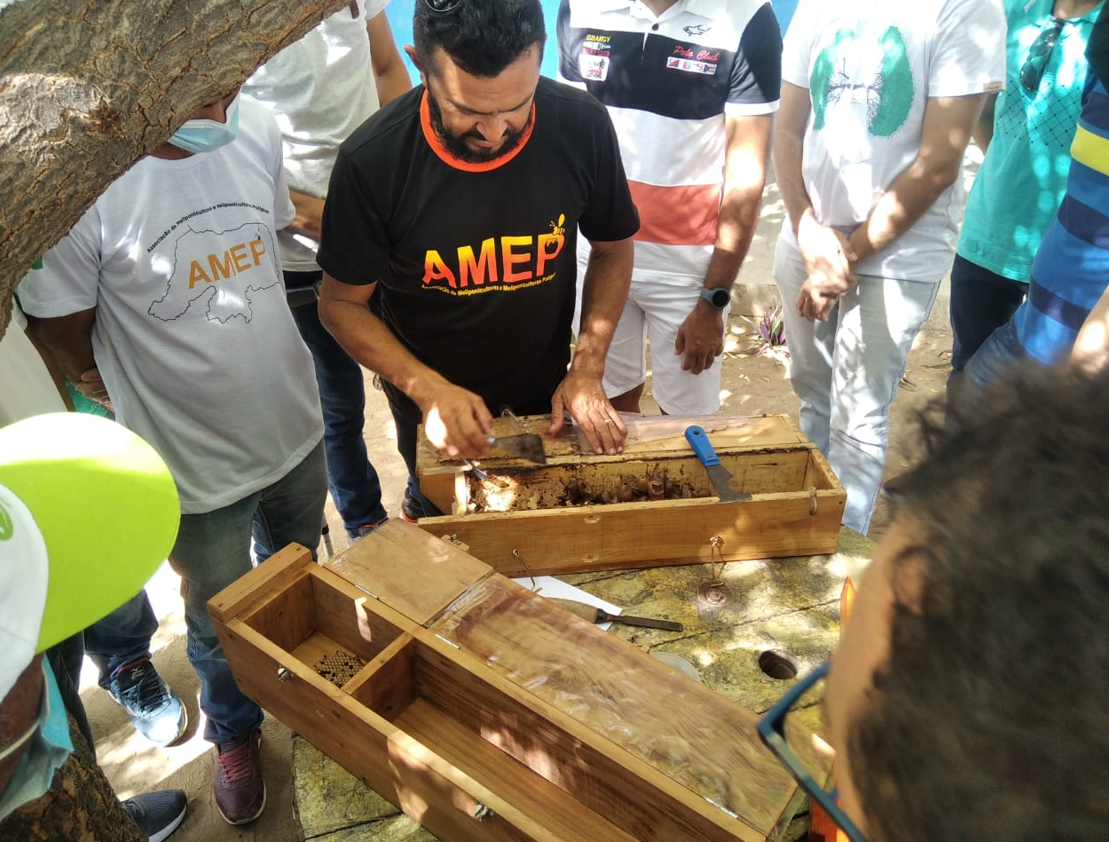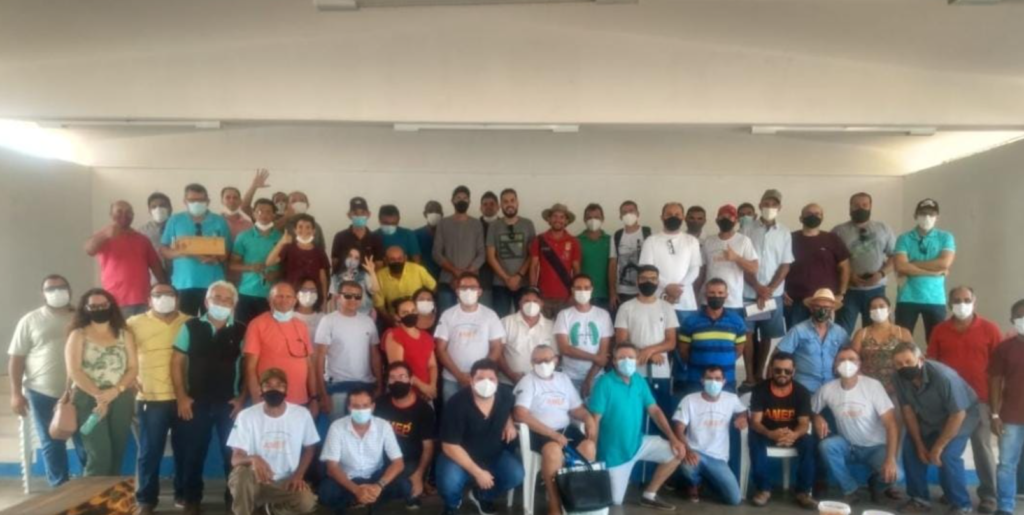
IX Meeting of Meliponiculturists of RN and I Meeting of Seridoense in Caicó
Meliponiculturists from Rio Grande do Norte meet in Caicó to discuss the regulation of meliponiculture in Rio Grande do Norte: Strategies are sought to achieve species preservation and income generation.
Participant Víctor Hugo made a point of recording and sharing the movements in prose and verse. Check out!

The question remained and I want you to be honest: at some event, there were so many people, like the one in Caicó?
Meliponiculture is art of the Gods; indigenous people already knew it; made, the Mayans, of the bee, one of their deities and occupied entire temples.
the queen goddess, always very fruitful, brought plenty to the rites of the year; Supplying warehouses with nuts, fruit, grains, fed the whole nation.
In the Brazilian Northeast, the activity grew and gained ground; had in Monsignor Bruening one of the patrons of this wonderful world.
Walnut and Vera, in Sao Paulo; Kerr, in Maranhão; your wounds, Rodrigues and Lula do Mel, in the confines of Pernambuco; Paulo Menezes, Tertullian and many others, in the country of Mossoró.
In 2004, valued the culture of our bees; occupied three thousand seats, in the auditorium of Capital do Sol: true human colony, gathered, by bees, by science! There were wounds, Menezes, Tertullian and so many other anonymous fans of this beauty.
In 2010, it was the turn of the Ibero-Latin congress to knock on our door, and there were Katia, Lionel and Message driving the activity of our people.
In 2013, there was that restlessness; Gonçalves didn't sleep, with such lamentation: It was fipronill and phosphorus killing the bees, everywhere;
and that's when the campaign “No bee, without food" began.
In 2014, through the gym, was found, that Jandaíra was the bee most bred by the Potiguar people. A lot of people struggled, like the case of the great Ulysses who, from Greece returned saying to Carvalho: "The RN has its value, because there is a lot of Meliponicultor."
2016 it's another milestone: Our Association appears, with the scope of linking income and preservation, serving native girls, daughters of our land, cohabiting the semiarid, from the coast to the sertão.
This way, the exotic doesn't have much time: Let's value Jati, the blast, Arapuá, the yellow, the Northeastern Uruçu; the white girl and, also, our crap; there are dozens of beautiful bees, that meet, in our land.
In 2017, what a joy!Dirk, Mir and Vera Lúcia provide us with a beautiful collection about our Jandaíra.
In 2018 is 2019, activities do not cease. EMATER and AMEP, in Union, share the idealization: together they take Meliponiculture to the middle of the hinterland.
In 2020, the challenge of isolation: "My God, when will the next agglomeration be possible"?
IS 2021 it was even harder: how many names did they leave us, increasing the sacrifice of those who stayed?
That's when the vaccine arrived, that the game turned, for our benefit. In day 23 of October, we revive the hope: Beekeepers gathered for the sake of the alliance, in treating the bee with its relevant importance..
Victor hugo. caicó, 23/10/2021

Sorry, the comment form is closed at this time.